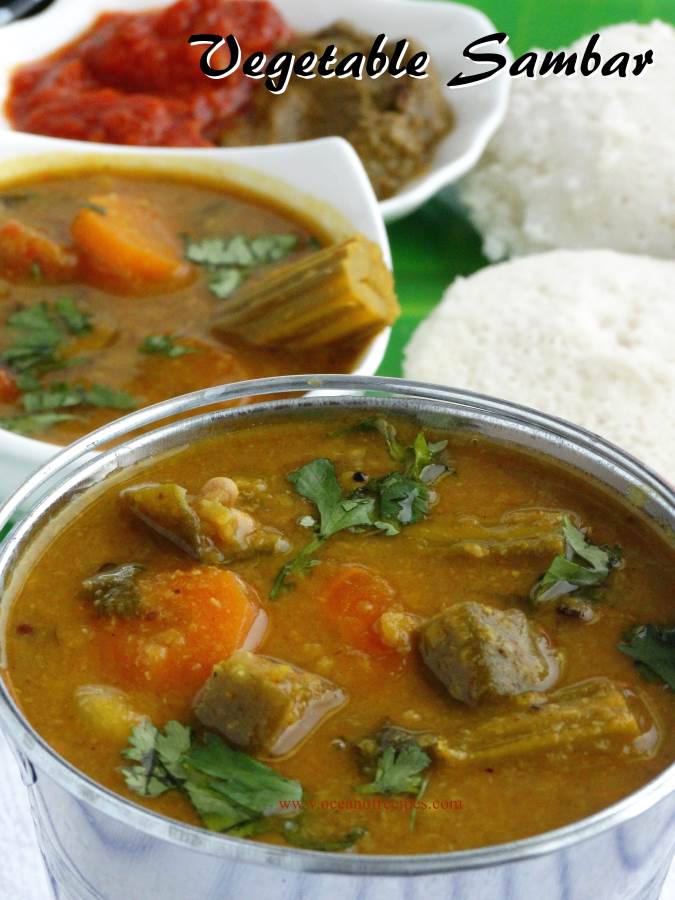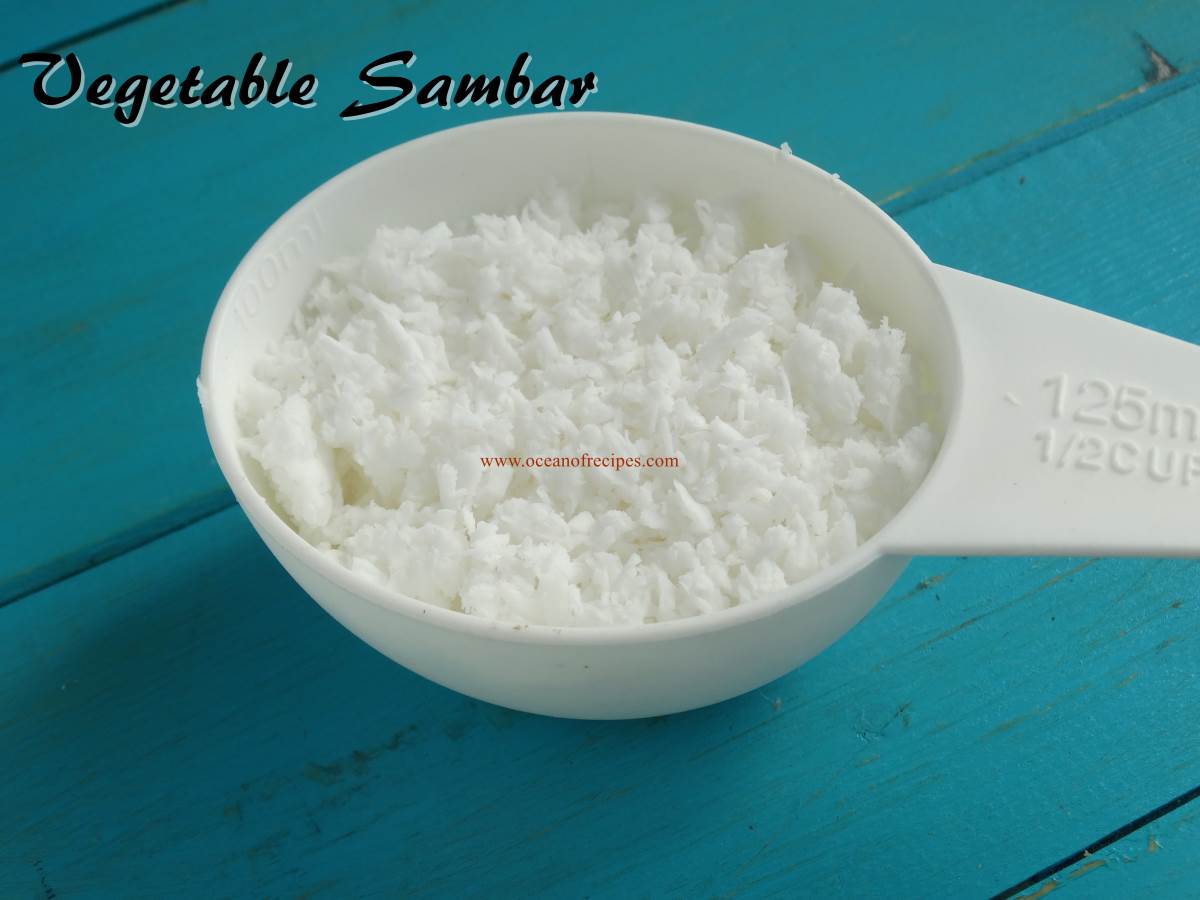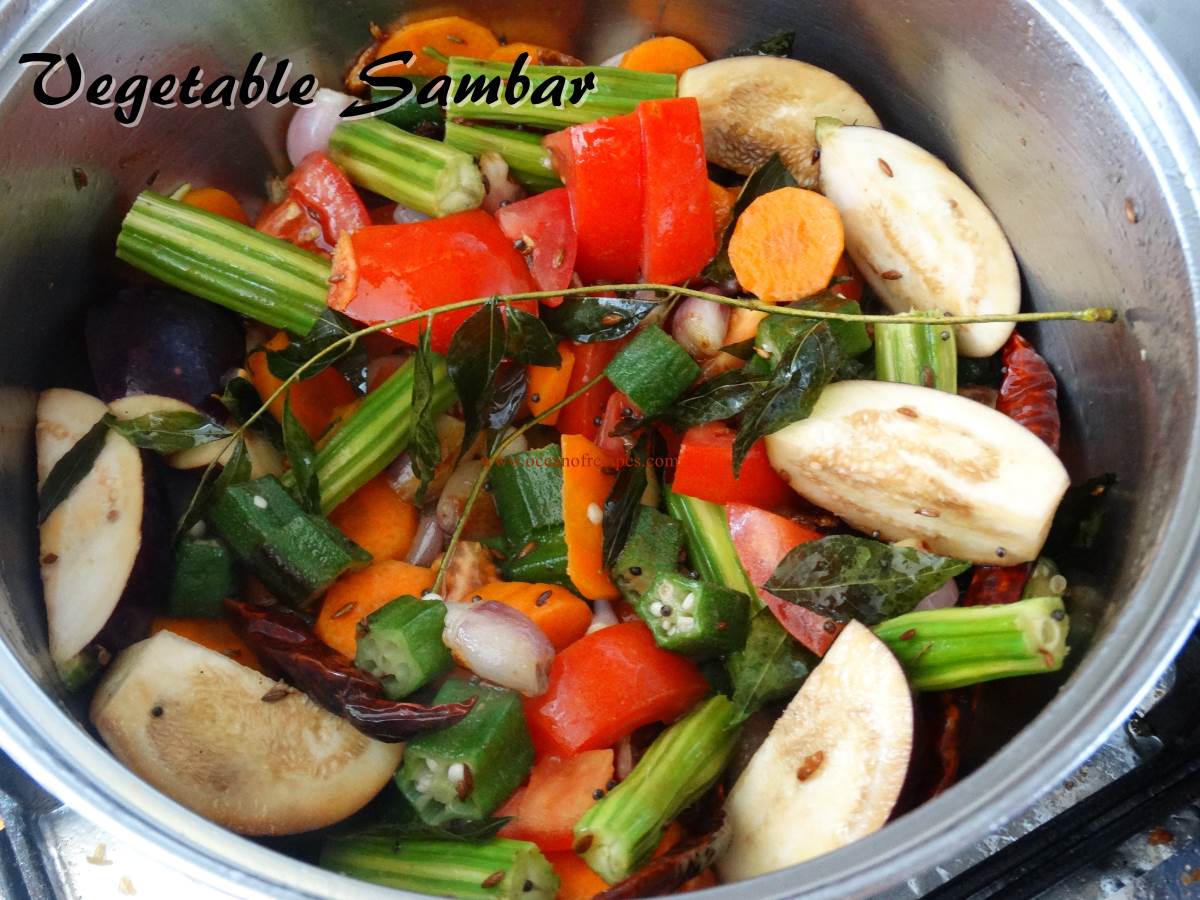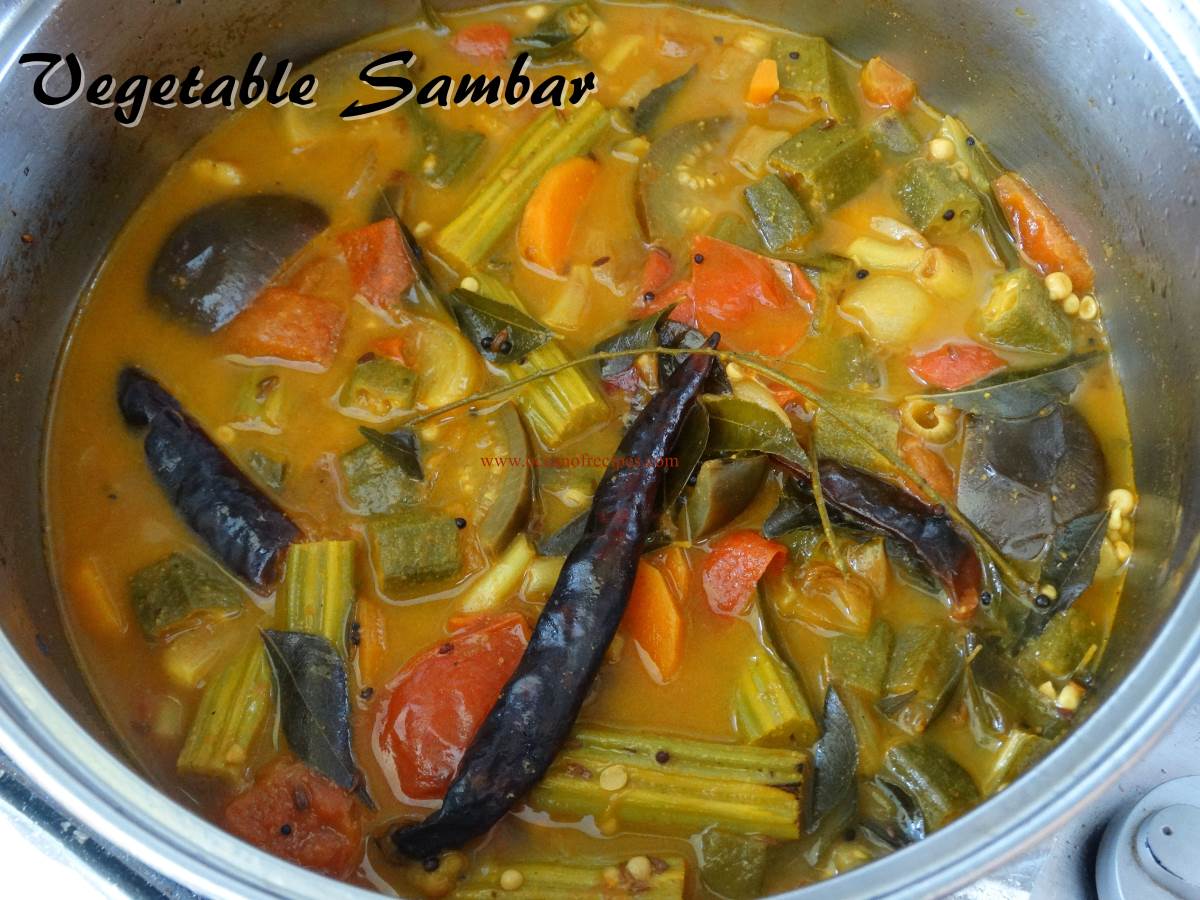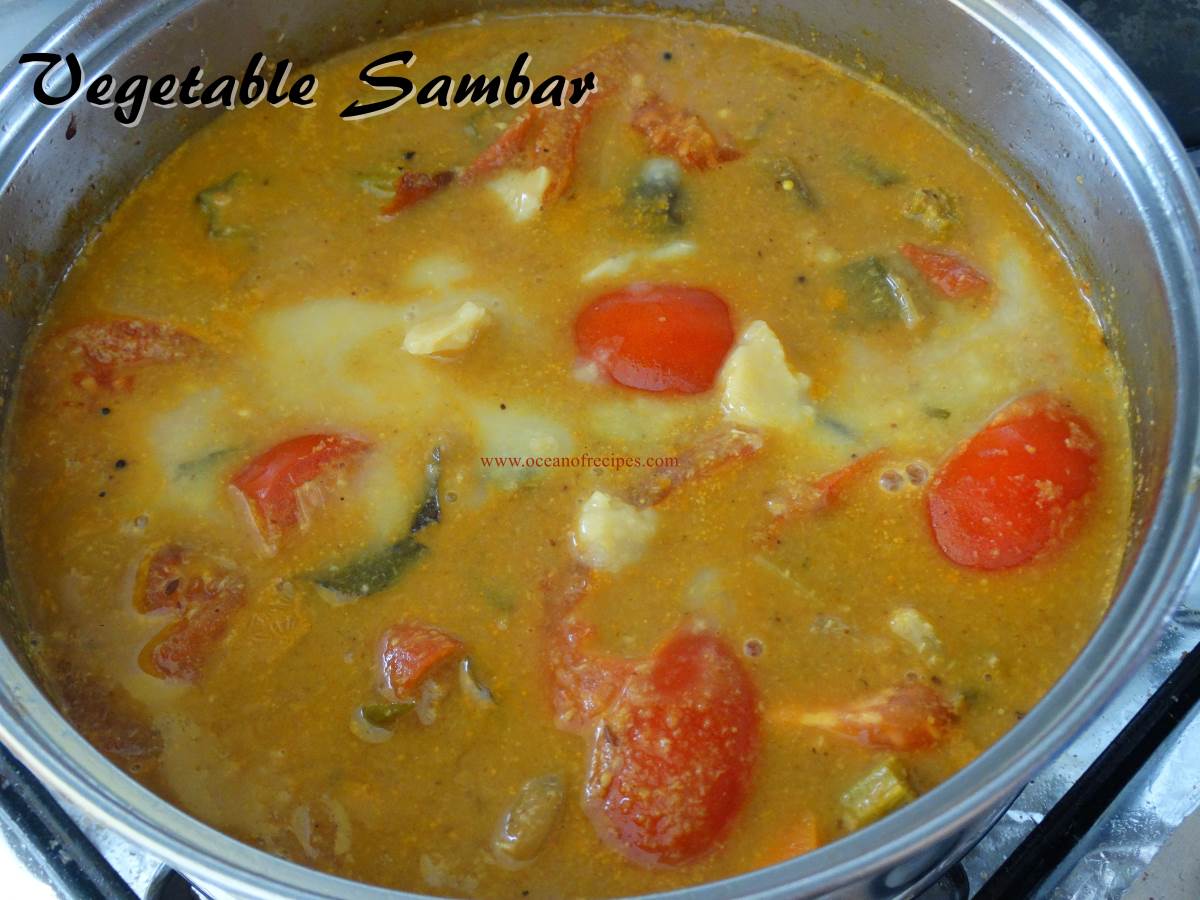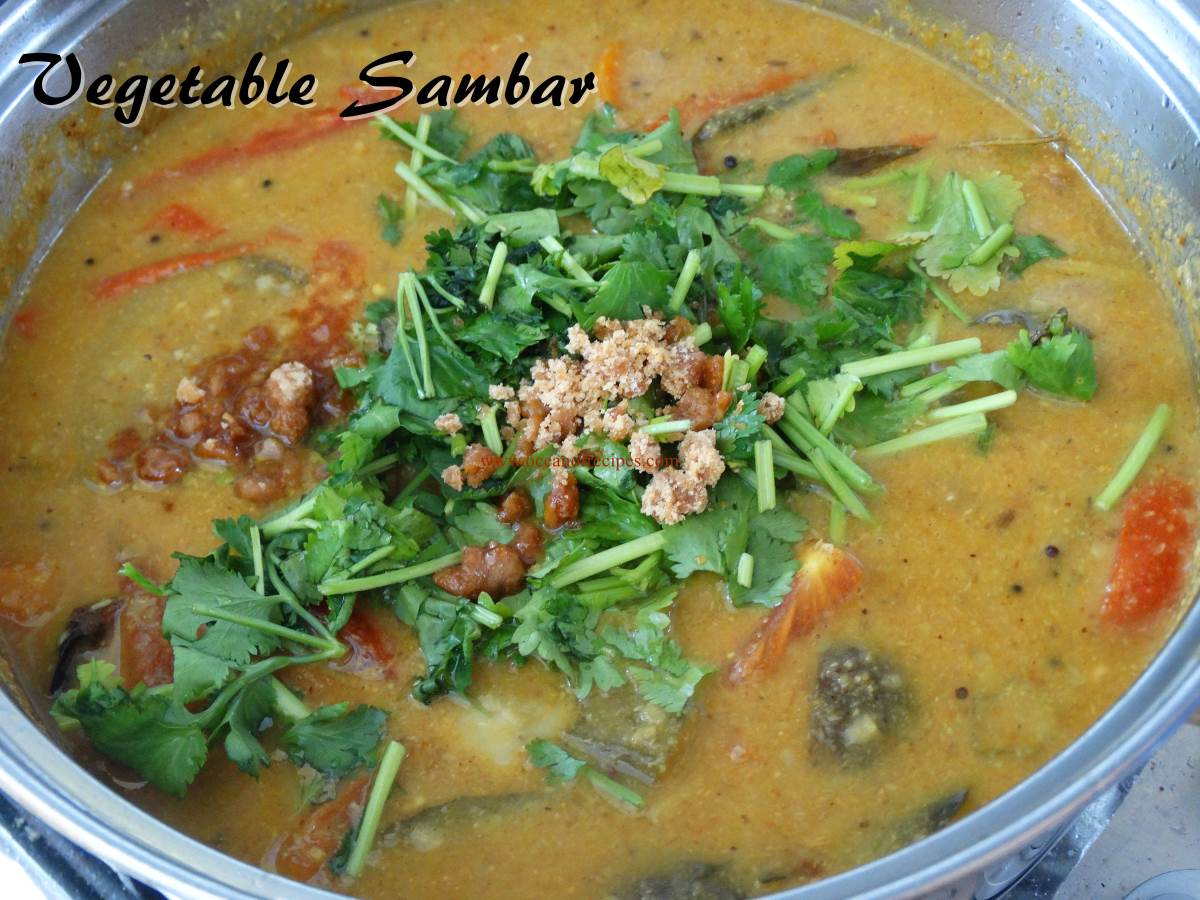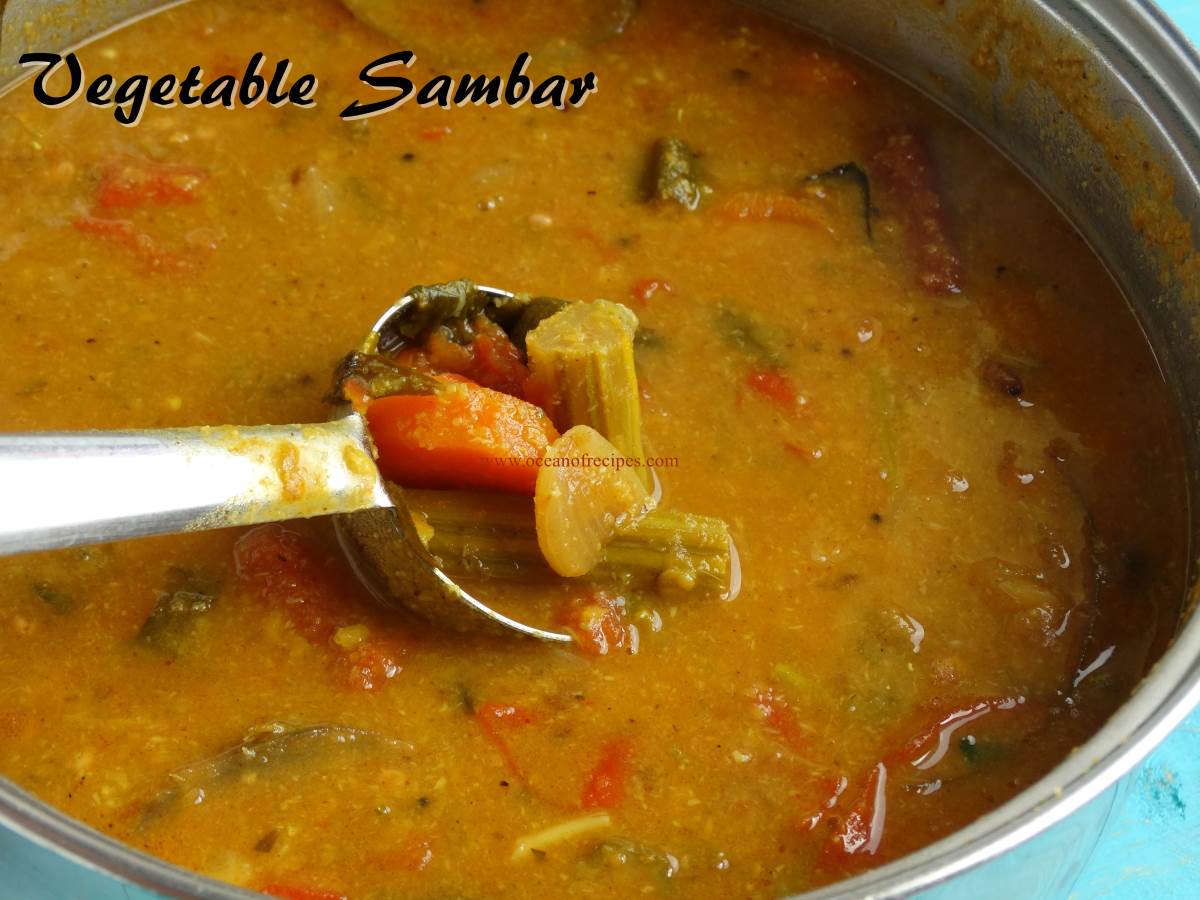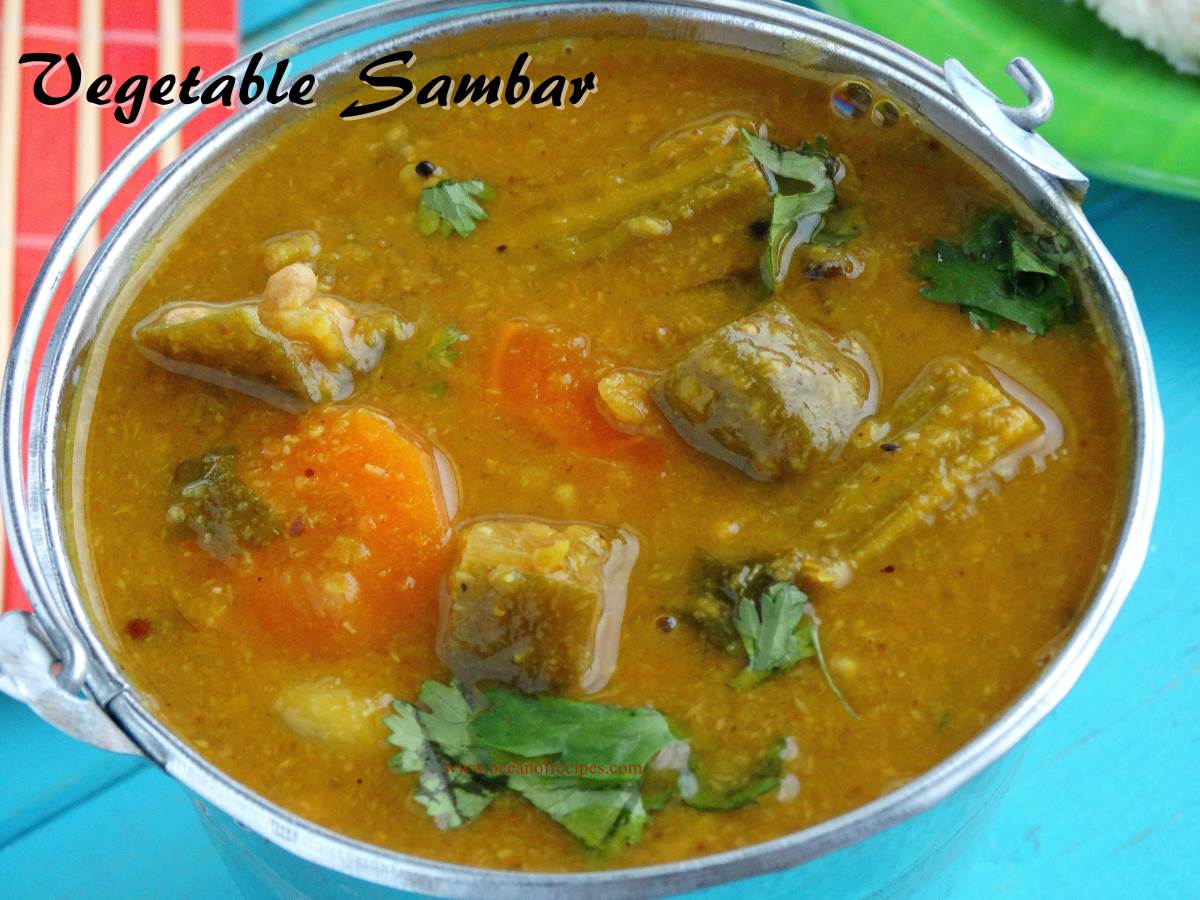From breakfast to tiffin, sambar plays a vital role. It is a must accompaniment for popular South Indian breakfast like Idli, Dosa, Vada and many more. Even during lunchtime, sambar is served with rice. There are a variety of sambar recipes, few of which I have already shared. This one I am sharing here is the mixed vegetables sambar.
I love to add small onions (kunjili or shallots or sambar onions) to my sambar because of its sweet taste. It gives a distinct flavour to the sambar. In this mixed vegetables sambar, you can add any vegetables you like carrot, drumstick, okra, radish, potato, cucumber, chow chow, pumpkin, brinjal and/or any vegetables you like. This time I have served the mixed vegetables sambar and Idli along with tomato and mint chutneys.
Preparation time: 10 mins (excluding soaking dal)
Cooking time: 40 mins
Cuisine: Tamil Nadu
Spiciness: Medium
Serves: 5 to 6
For sambar masala paste
For boiling dal
For boiling vegetables
Tadka (Tempering)
Boiling dal
Roasting and grinding for sambar masala
Tadka (Tempering) and cooking vegetables
